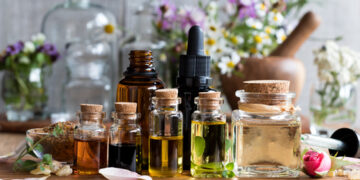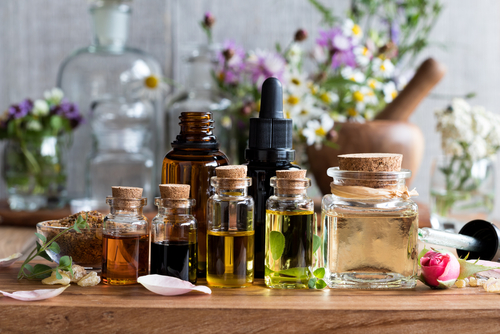In a crowded hospital hallway during my early nursing years, I watched a patient curl inward, palms pressed to her temples, her voice barely audible over the fluorescent hum. “It’s not just pain,” she whispered. “It’s like my whole body is buzzing.” We adjusted her medication, dimmed the lights, and hoped it would pass. Later that week, she told me that her daughter had brought a lavender sachet from home. “I don’t know why,” she said, “but the scent helped.” At the time, I dismissed it as sentimental comfort. Years later, standing in a Moroccan souk surrounded by distillers of rose and neroli, I understood something deeper was at play.
Aromatherapy—using essential oils for therapeutic purposes—has long been part of global healing traditions. From frankincense in ancient temples to eucalyptus in Aboriginal medicine, scent has been a bridge between the physical and the emotional. And today, more people living with chronic conditions are turning to these botanical allies for support, not as a cure-all, but as part of a broader care rhythm.
Scent as Medicine: More Than a Pleasant Aroma
Essential oils are highly concentrated plant extracts obtained through steam distillation or cold pressing. In traditional medicine systems, they’re used not just for fragrance, but for their perceived ability to stimulate the senses, shift mood, and influence physical states. The limbic system—the brain’s emotional center—is especially sensitive to smell. This is why a single inhale can evoke memory, comfort, or calm in a way that logic never could.
Aromatherapy doesn’t aim to “fix” chronic illness. Rather, it offers small, consistent moments of relief: a deep breath during a migraine surge, a subtle unwind before restless sleep, or a moment of grounding when symptoms cloud clarity.
Headaches and Tension: Cooling the Pulse
Chronic headaches, particularly tension-type and migraines, can be debilitating. While many people rely on medication, some have found that essential oils like peppermint, lavender, and rosemary offer natural support.
Peppermint, with its high menthol content, produces a cooling effect when diluted and applied to the temples or the back of the neck. Lavender is known for its calming properties, and studies suggest it may help reduce migraine intensity when inhaled regularly. A few drops on a cotton pad, or in a personal diffuser, can make a meaningful difference—especially when paired with rest and hydration.
During a clinic rotation in Portugal, I met a neurologist who kept a small roller bottle of lavender oil in her pocket—not for her patients, but for herself. “It buys me ten minutes of peace between procedures,” she told me. That’s sometimes all it takes.
Insomnia and Sleep Struggles: Scent as a Signal
Living with chronic conditions often disrupts sleep—either through physical discomfort or the emotional toll of long-term illness. Aromatherapy doesn’t replace medical treatments for sleep disorders, but it can help train the body to recognize a “sleep signal.”
Chamomile, cedarwood, and vetiver are among the oils traditionally used to promote deeper rest. Lavender appears again here, particularly in the form of pillow sprays or nighttime baths. Regular use of these scents can become part of a ritual—sending gentle cues to the nervous system that it’s safe to slow down.
One woman I met during a retreat in Sri Lanka described her nightly practice: a single drop of vetiver oil, pressed between her palms and inhaled as she settled into bed. “It doesn’t knock me out,” she said. “It’s like a hand at my back reminding me to let go.”
Emotional Overload: Calming the Inner Weather
Chronic conditions don’t just affect the body. They reshape identity, relationships, and emotion. Essential oils like bergamot, sweet orange, and ylang-ylang have been used to help ease symptoms of anxiety and mild depression. While scent won’t rewrite the experience of illness, it can soften the sharp edges.
Guided aromatherapy sessions—offered by certified practitioners—can include scent pairing with breathwork or mindfulness, allowing the emotional body to feel seen and supported. Even solo rituals, like diffusing an uplifting oil during a difficult morning or carrying a scent locket during appointments, can bring subtle steadiness.
Integrating Aromatherapy at Home
You don’t need a full apothecary to begin. A few high-quality oils, a diffuser, and basic understanding go a long way. Start with one or two oils. Notice how your body and mind respond. Keep a journal if you’re tracking symptoms. Use caution: essential oils are potent, and some can cause reactions if undiluted or used excessively.
Always dilute oils in a carrier (like jojoba or coconut oil) for topical use. And consult a qualified practitioner or aromatherapist, especially if you’re pregnant, have respiratory issues, or are on multiple medications.
Respecting the Plant, Respecting the Body
One of the greatest lessons I’ve learned from traveling alongside traditional healers is that plants aren’t tools—they’re companions. Aromatherapy works best not when it’s seen as a quick fix, but when it becomes a dialogue with the body: What do I need right now? What do I feel? What helps me return?
For those living with chronic conditions, there may be no miracle cure—but there can be moments. Moments of calm. Of connection. Of breath. And scent, ancient and ephemeral, can lead the way.



























